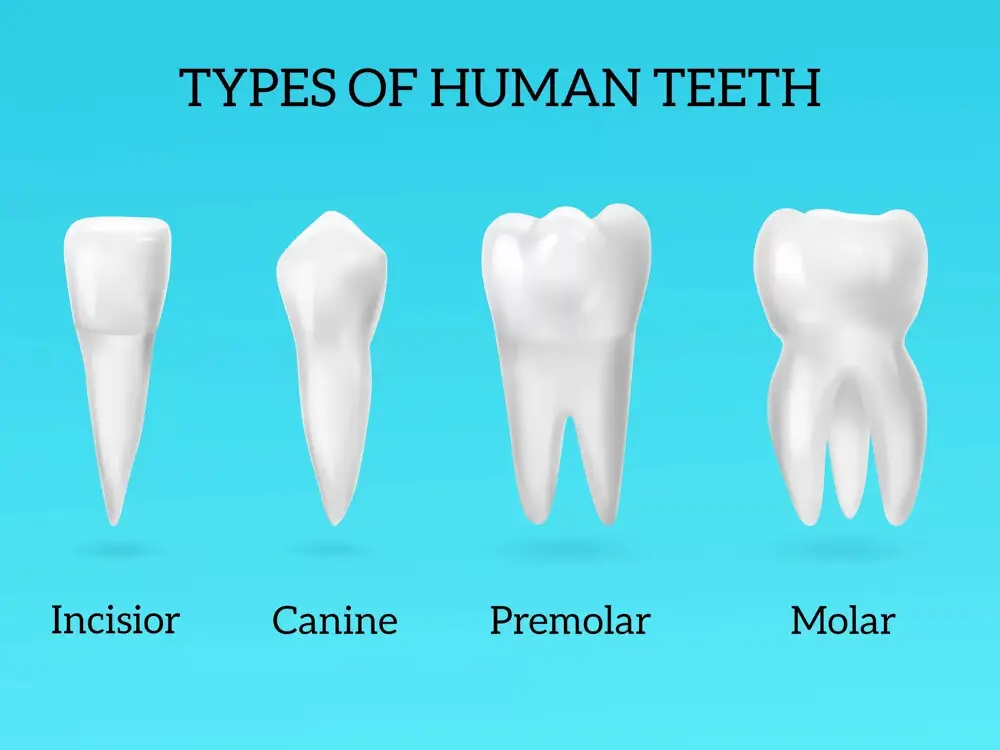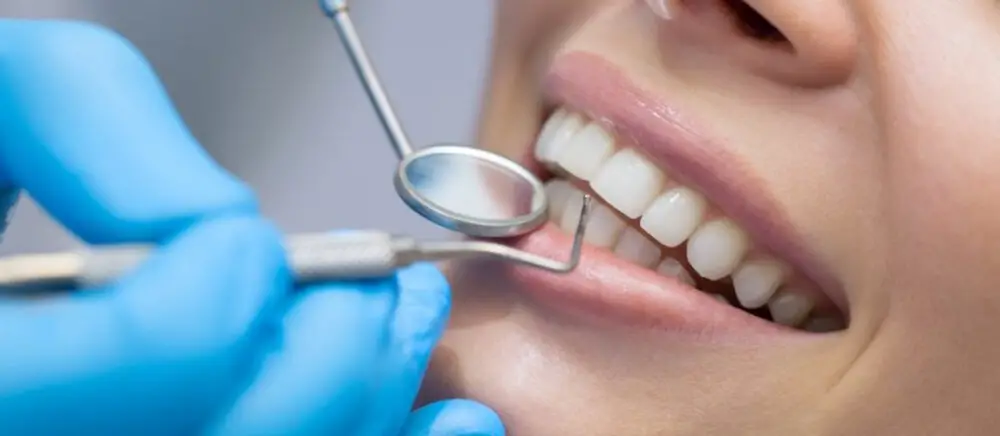Stop the Bleed: The Ultimate Guide to Preventing Teeth Bleeding While Flossing

Bleeding gums while flossing can be a common problem that many people face. It can be alarming to see blood on the floss or in your mouth, but it is not something that should be ignored. If left untreated, bleeding gums can lead to more serious dental problems, such as gum disease and tooth loss. Fortunately, there are steps you can take to prevent bleeding while flossing, and this ultimate guide will provide you with all the information you need to keep your teeth and gums healthy. The importance of proper oral hygiene cannot be overstated. Flossing is an essential part of a daily dental routine, but many people skip this step due to discomfort or fear of bleeding. However, bleeding gums while flossing is often a sign of poor oral hygiene and can lead to more serious dental problems down the road. This guide will cover everything you need to know about how to prevent bleeding while flossing, including tips on proper flossing technique, how to choose the right floss, and other steps you can take to improve your overall oral health.
One of the most common dental problems experienced by many people is bleeding gums during flossing. This condition is usually caused by inflammation of the gums, commonly known as gingivitis. When bacteria build up in the mouth, they form a sticky layer of plaque on the teeth, which can irritate the gums and cause them to become swollen and bleed. Other causes of bleeding gums include improper flossing technique, using the wrong kind of floss, or brushing too hard. If left untreated, gingivitis can lead to more serious conditions, such as periodontitis, which can cause tooth loss and other health complications. Therefore, it is essential to take proper care of your teeth and gums to prevent bleeding while flossing.
Maintaining good oral hygiene is crucial for maintaining overall dental health. It involves regular brushing, flossing, and dental checkups. Neglecting oral hygiene can lead to several dental problems, including bleeding gums while flossing. Bleeding gums can be caused by various factors, such as plaque buildup, gum disease, or improper flossing techniques. Good oral hygiene practices can help prevent bleeding gums and other dental issues. By brushing twice a day, flossing daily, and using mouthwash, you can remove plaque and bacteria from your teeth and gums, reducing the risk of gum disease and bleeding gums. Regular dental checkups can also help identify any potential issues before they become more severe. Overall, good oral hygiene is essential for a healthy mouth and should not be overlooked.
The purpose of the article titled \Stop the Bleed: The Ultimate Guide to Preventing Teeth Bleeding While Flossing\ is to provide solutions and preventions to a common problem faced by many individuals while maintaining their dental hygiene. The article aims to educate people on the causes of teeth bleeding and the correct techniques to prevent it. The article also provides information on the best flossing tools and the importance of regular dental checkups. By providing effective and practical solutions, the article helps readers to adopt healthy habits and prevent dental problems. Overall, the article’s primary objective is to promote good oral health and prevent teeth bleeding during flossing.
Understanding the Causes of Teeth Bleeding While Flossing

Bleeding while flossing can be an alarming experience, but it is not uncommon. There are several reasons why your teeth may bleed while flossing. One of the most common causes is gingivitis, which is a gum disease caused by the buildup of plaque and tartar on your teeth. When you floss, the pressure can cause the inflamed and weakened gum tissue to bleed. Poor oral hygiene, smoking, hormonal changes, certain medications, and some medical conditions can also contribute to gingivitis. If left untreated, gingivitis can progress to periodontitis, which can cause tooth loss. Another cause of bleeding while flossing is aggressive flossing. Some people may floss too hard or use a floss that is too abrasive, causing the gum tissue to become irritated and bleed. It is important to use a gentle touch and soft floss when flossing to avoid damaging your gums. Additionally, if you have not flossed in a while, your gums may bleed initially as they adjust to the stimulation. However, with regular flossing, the bleeding should subside. If your teeth continue to bleed while flossing, it is important to see a dentist to determine the underlying cause and receive appropriate treatment.
Bleeding while flossing is a common dental issue that can be caused by several factors. One of the leading causes of bleeding is gum disease, which occurs due to the buildup of plaque and tartar on teeth and gums, leading to inflammation and bleeding. Aggressive flossing can also lead to bleeding, as it can cause damage to the gums and teeth. Other factors that can contribute to bleeding include using a hard-bristled toothbrush, vitamin deficiencies, hormonal changes, and certain medications. It is essential to identify the underlying cause of bleeding to address the issue effectively and prevent further complications.
Teeth bleeding while flossing can be a concerning issue and it is essential to identify the underlying cause to prevent further complications. Firstly, improper flossing technique can lead to bleeding gums, which can be corrected by using the right flossing technique and gently massaging the gums. Secondly, gum disease or gingivitis can also cause bleeding, which requires immediate medical attention. Other causes may include vitamin deficiencies, hormonal changes, or certain medications. It is advised to consult a dentist to determine the root cause of teeth bleeding while flossing and to receive appropriate treatment to prevent further damage and promote good oral health.
How to Floss Properly

Flossing is a crucial part of maintaining good oral hygiene, but many people don’t know how to floss properly. To start, you should use about 18 inches of floss and wrap it around your middle fingers, leaving a few inches in between. Use your index fingers to guide the floss between your teeth, making sure to get all the way down to the gum line. Once you reach the gum line, curve the floss around one tooth in a C shape and gently slide it up and down, making sure to get under the gum line. Repeat this process for each tooth, using a fresh section of floss each time. When you’re done flossing, make sure to rinse your mouth with water to remove any debris that may have been loosened. It’s important to floss properly to prevent teeth bleeding and other dental problems. If you’re experiencing bleeding while flossing, it could be a sign of gum disease or other issues. Be gentle when flossing and don’t force the floss between your teeth, as this can cause irritation and bleeding. If you’re having trouble flossing, talk to your dentist about alternative options, such as interdental brushes or water flossers. By taking care of your teeth and gums through proper flossing and regular dental checkups, you can prevent bleeding and other dental problems and maintain a healthy smile.
Flossing is a crucial part of dental hygiene, but it is often done incorrectly, leading to bleeding and other dental problems. To properly floss, start by taking about 18 inches of floss and wrap it around your fingers, leaving a few inches free. Gently slide the floss between your teeth, using a back-and-forth motion to remove any debris. Be careful not to snap the floss against your gums, as this can cause bleeding. Curve the floss around each tooth in a C-shape and slide it up and down to remove any plaque or food particles. Repeat this process for all of your teeth, making sure to use a fresh section of floss for each tooth. With proper technique, flossing can help prevent gum disease and keep your teeth healthy and strong.
When it comes to preventing teeth bleeding while flossing, choosing the right type of floss is crucial. There are several types of floss available in the market, including waxed, unwaxed, flavored, and unflavored floss. Waxed floss is best for people with tightly spaced teeth or braces, as it glides easily between the teeth. Unwaxed floss is ideal for people with more space between their teeth, as it can better remove plaque and food particles. Flavored floss can make flossing more enjoyable and encourage people to floss regularly, while unflavored floss is best for people with sensitive gums. Ultimately, the best type of floss is the one that you will use consistently, so experiment with different types to find the one that feels most comfortable and effective for you.
When it comes to preventing teeth bleeding while flossing, there are several common mistakes that people make that can actually worsen the problem. One of the most common mistakes is flossing too aggressively, which can cause the gums to become irritated and bleed. Another mistake is using the wrong type of floss, such as a floss that is too thick or rough. Additionally, some people do not floss often enough or do not floss correctly, which can lead to the buildup of plaque and tartar and ultimately cause bleeding. To prevent teeth bleeding while flossing, it is important to floss gently and regularly, use a soft and smooth floss, and follow proper flossing techniques.
Preventing Teeth Bleeding While Flossing

Flossing is an essential component of oral hygiene. It helps to remove food particles and plaque, which can cause tooth decay and gum disease. However, some people experience bleeding while flossing, which can be uncomfortable and even painful. Preventing teeth bleeding while flossing is possible with a few simple steps. First, it is important to use the right kind of floss. Some people prefer waxed floss, while others prefer unwaxed. It is important to choose a floss that is comfortable and effective for your teeth. Additionally, it is important to floss gently. If you press too hard or floss too aggressively, you may cause bleeding. Instead, use a gentle back-and-forth motion to loosen debris and plaque. Another way to prevent teeth bleeding while flossing is to use a mouthwash after flossing. This will help to kill any bacteria that may be present in your mouth, reducing the risk of infection. Additionally, it is important to floss regularly. If you only floss occasionally, your gums may be more sensitive to the process and more likely to bleed. By flossing every day, you can make the process more routine and less likely to cause bleeding. Finally, if you experience bleeding while flossing, it is important to talk to your dentist. They can help you to determine the cause of the bleeding and provide guidance on how to prevent it in the future. By taking these steps, you can enjoy the benefits of flossing without experiencing any discomfort or bleeding.
Bleeding gums are a common dental problem, but the good news is that there are several strategies you can use to prevent it from happening. Using an antiseptic mouthwash after brushing and flossing can help kill bacteria and reduce the risk of inflammation. Adjusting your flossing technique can also make a big difference- be gentle and use a sawing motion to avoid injuring your gums. Additionally, regular dental checkups are crucial for keeping your oral health in check and catching any potential issues early on. By practicing good oral hygiene habits and staying on top of your dental appointments, you can prevent bleeding and maintain your beautiful smile for years to come.
When to Seek Professional Help

While flossing can be a great way to maintain oral hygiene, some people may experience bleeding from their gums while doing so. In most cases, this may be a minor issue that can be resolved with some changes in flossing technique or the use of different dental products. However, there are instances where seeking professional help becomes necessary. If you experience persistent bleeding from your gums while flossing, it is advisable to consult a dentist or periodontist. They will be able to diagnose the cause of the bleeding and recommend appropriate treatment. It is also important to seek professional help if you experience other symptoms in addition to bleeding, such as pain, swelling, or bad breath. These may be signs of more serious oral health problems, such as gum disease or tooth decay. Ignoring these symptoms can lead to further complications, including tooth loss. Therefore, it is important to address any concerns with a dental professional as soon as possible to prevent more serious issues from arising. Remember, prevention is always better than cure, so don’t hesitate to seek professional help if you have any concerns about your oral health.
It is crucial to seek the help of a dental professional if you experience persistent bleeding while flossing. Bleeding gums can be a sign of underlying dental problems such as gum disease, which, if left untreated, can lead to tooth loss and other serious health issues. Additionally, if you notice any unusual changes in the color or texture of your gums, it is important to seek immediate dental attention. Dental professionals can provide a thorough examination to determine the cause of the bleeding and recommend appropriate treatment options to prevent future bleeding and maintain good oral health. Remember, regular dental check-ups and proper oral hygiene can help prevent dental problems and ensure a healthy smile for life.
While teeth bleeding during flossing is often a minor issue, there are certain signs that may indicate more serious dental problems. These signs include persistent bleeding, swollen or tender gums, receding gum lines, loose teeth, bad breath, and changes in the way teeth fit together when biting or chewing. If you experience any of these symptoms, it is important to schedule an appointment with your dentist as soon as possible. Ignoring these signs could lead to more serious issues such as gum disease, tooth decay, or even tooth loss. It is crucial to prioritize your dental health and take action before the problem worsens.
In \Stop the Bleed: The Ultimate Guide to Preventing Teeth Bleeding While Flossing,\ readers are presented with a comprehensive guide to preventing bleeding while flossing. The article emphasizes the importance of flossing regularly, but also acknowledges that it can sometimes cause discomfort or bleeding. To prevent this, the article suggests using a soft-bristled toothbrush and a gentle touch while flossing. It also recommends using waxed floss or a water flosser as alternatives. Additionally, readers are advised to visit their dentist regularly and to not hesitate to seek professional help if bleeding persists. Overall, the article provides valuable tips and insights for those seeking to maintain good oral health while flossing.
Maintaining good oral hygiene is essential for healthy teeth and gums. While brushing and flossing are the two most important daily habits, flossing is often overlooked and undervalued. However, flossing is crucial in removing plaque and food particles from areas that a toothbrush cannot reach. While flossing, it is important to use the correct technique and not apply too much pressure, as this can cause teeth bleeding. Bleeding gums may be an indication of gum disease, which, if left untreated, can lead to serious health problems. Therefore, it is important to pay attention to your oral hygiene and prevent teeth bleeding while flossing.
Taking action and seeking help when it comes to dental health is crucial, especially when it comes to preventing teeth bleeding while flossing. It’s important to understand that bleeding gums are not normal and can be a sign of gum disease or other underlying health issues. Don’t be afraid to reach out to a dental professional for guidance on proper flossing techniques or to address any concerns you may have. Remember, prevention is key when it comes to maintaining good oral health, so don’t hesitate to seek the help you need to keep your teeth and gums healthy.
Conclusion

In conclusion, preventing teeth bleeding while flossing is crucial for maintaining good oral hygiene and avoiding further dental complications. By following the Stop the Bleed guide, individuals can learn the proper techniques for flossing and preventing bleeding, such as using gentle pressure and selecting the right type of floss for their teeth. It is important to stay consistent with flossing habits and to seek professional dental advice if bleeding persists. With these preventative measures in place, individuals can enjoy healthy teeth and gums for years to come.







